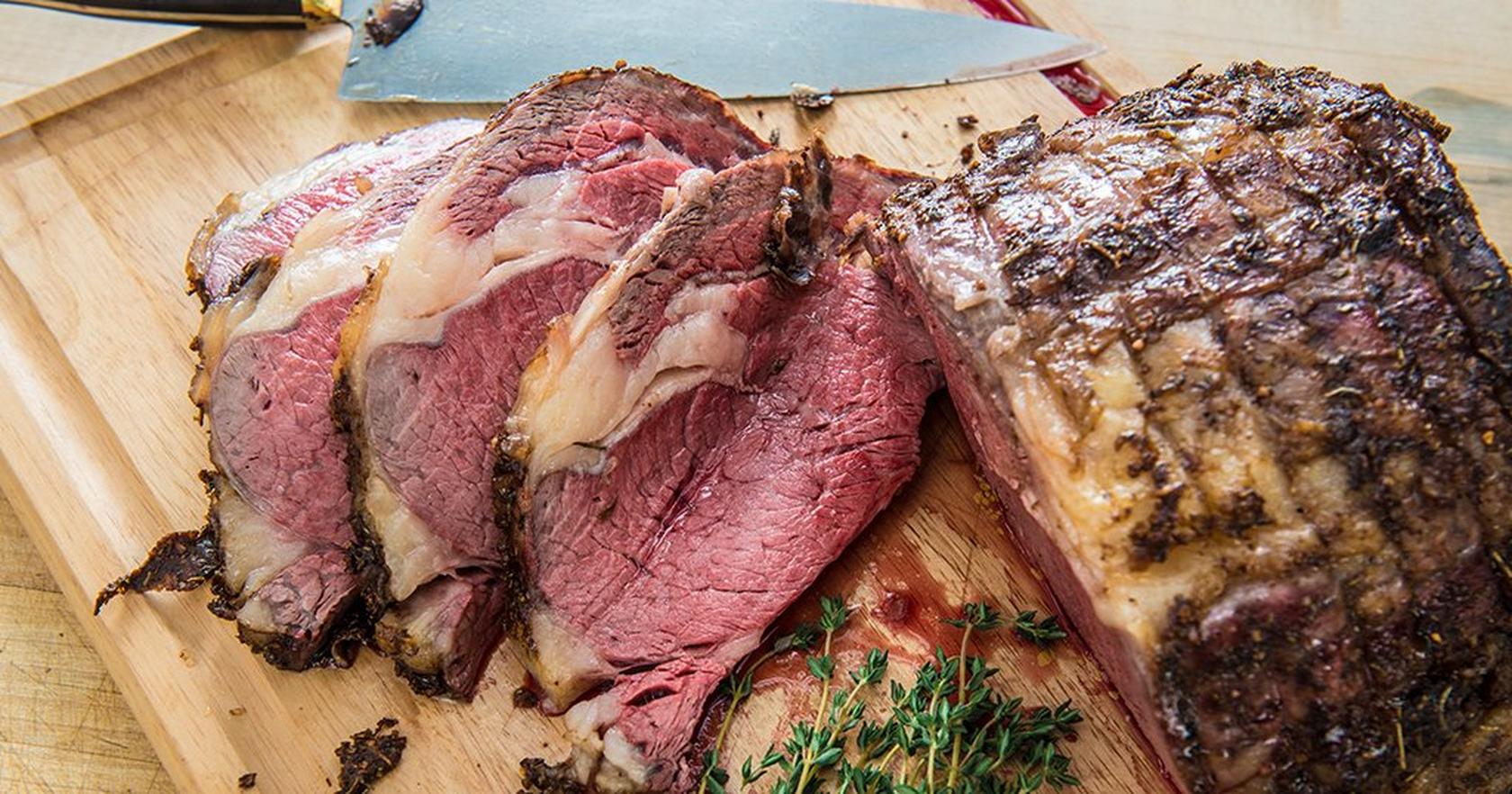
Prime rib is one of the most delicious cuts of meat and cooking it doesn't require any special skills.
This is the best smoked prime rib recipe for beginners:
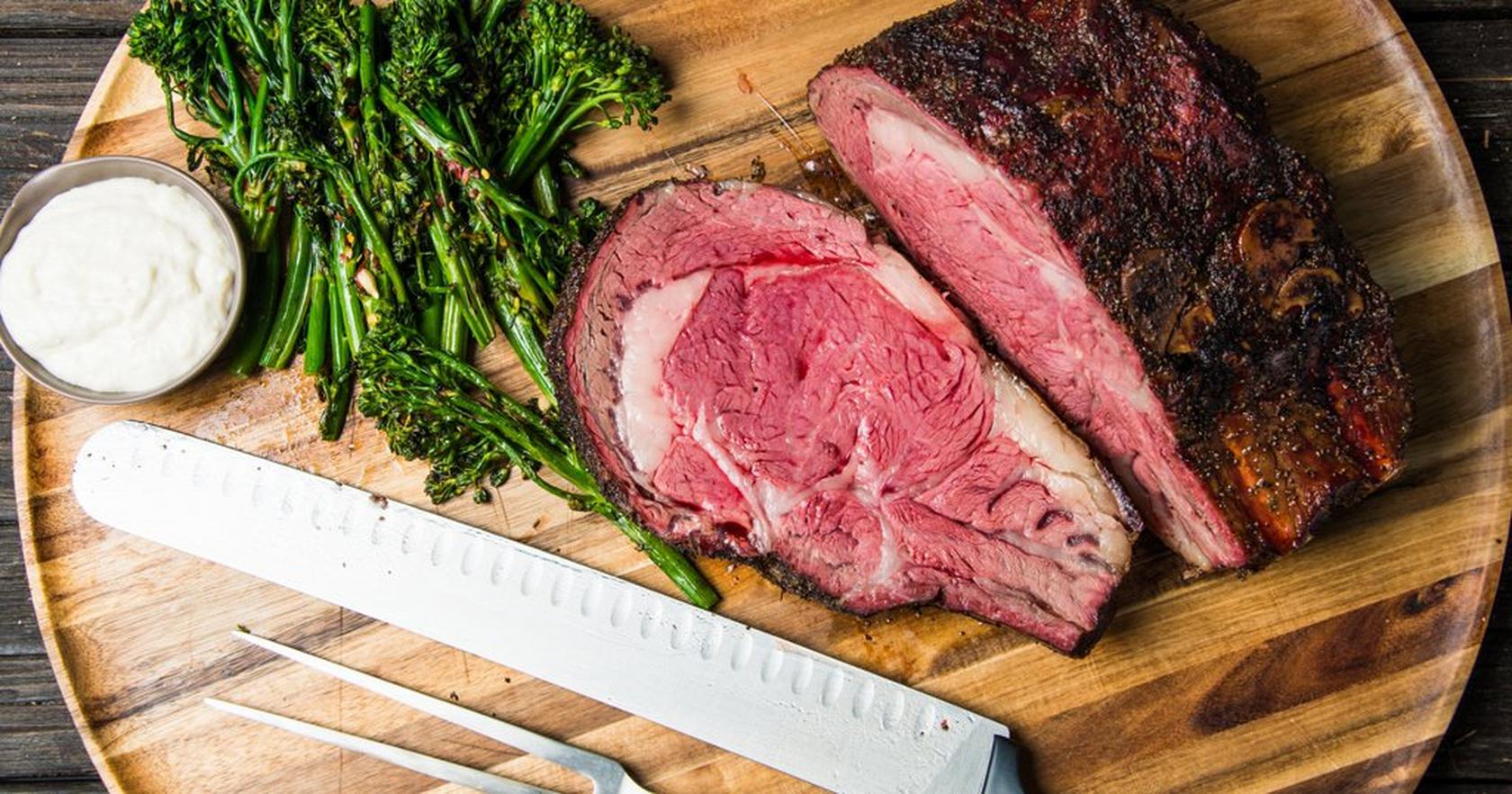
- At least 48 hours before cooking, season the prime rib roast with salt and place it uncovered in your refrigerator
- Cook the prime rib low and slow at 250 degrees Fahrenheit until the internal temperature reaches 120 degrees F (at least 3 hours).
- Crank the heat up to 500 degrees Fahrenheit to crisp the exterior of the roast. Allow the internal temperature to reach 130 degrees Fahrenheit — that's a perfect medium-rare.
- Rest for 20-30 minutes, carve, and serve.
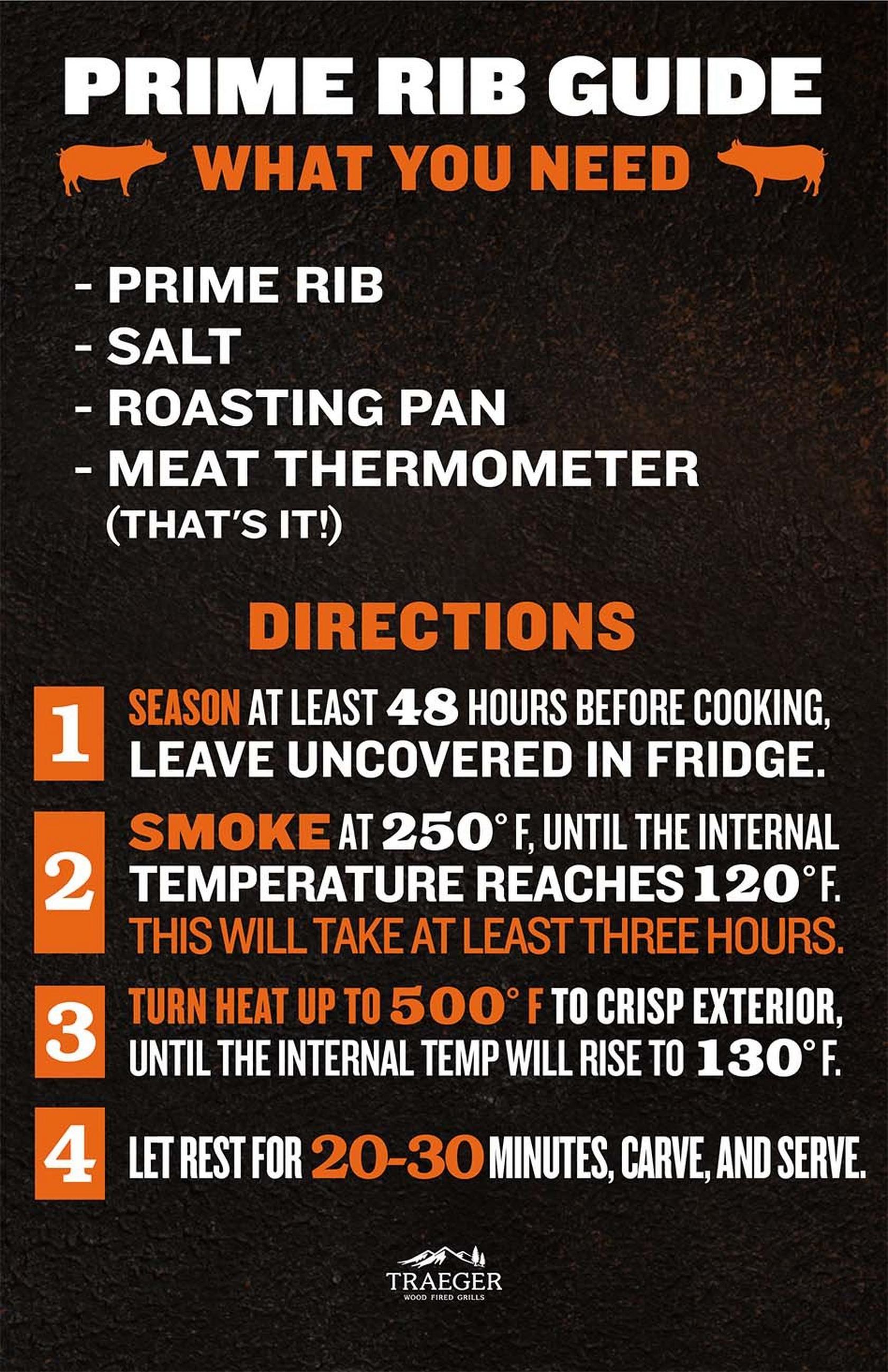
Easy, right? Most of the choices you make will come in the buying and preparation phase, so let's talk about that.
What Is a Prime Rib?
Prime rib is a large cut of meat that includes the 6th to 12th ribs of a steer. The cut is often sold in half sections: ribs 6 to 9 (which is usually the fattier cut) or ribs 10 to 12 (which typically has leaner meat).
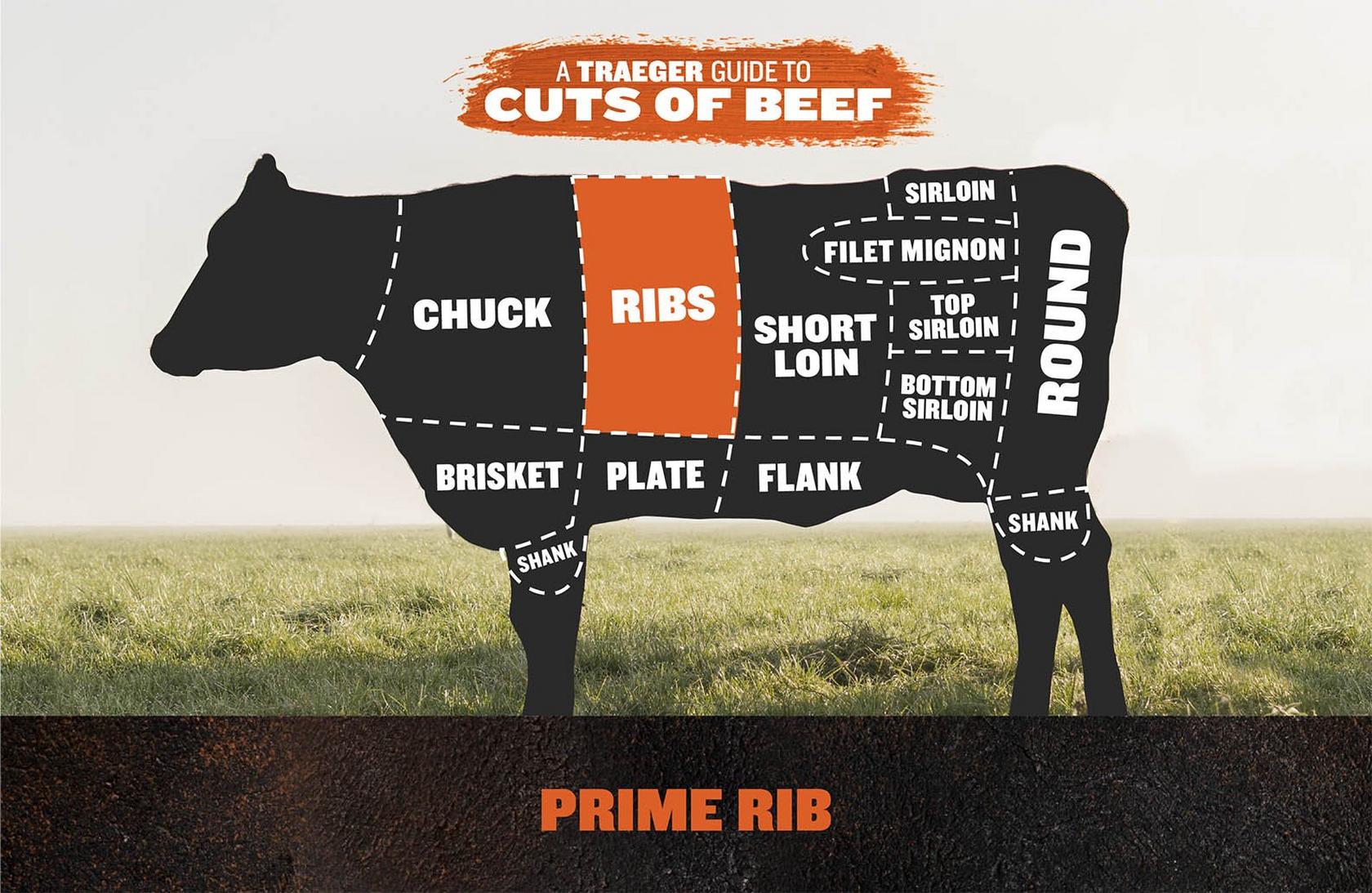
When prime rib is cut into even smaller sections, you get tender delicious steaks like the ribeye, and New York steak. You can think of prime rib as an all-star team of beef.
Is Rib Roast the Same as Prime Rib?
Yes, prime rib is sometimes called rib roast or standing rib roast. You may also see this cut going by the name ribeye roast. There is no set naming convention for prime rib so when you go to buy one, make sure you tell your butcher exactly what you want.
Where Do You Buy Prime Rib?
Buy prime rib from your local specialty butcher or full-service supermarket butcher. In nearly all cases, you'll have to call ahead to order.
Buying Prime Rib
Very few supermarkets carry prime rib on a daily basis like they do with chicken thighs or sirloin steak. You'll probably have to pre-order your prime rib. Pre-ordering your prime rib gives you complete control over what you end up getting.
Our recommendations:
- Order a fresh prime rib, not frozen
- Order as far in advance as you can, and take delivery at least three days before you plan to serve it, for preparation purposes
- If you don’t want to remove it yourself, ask for the butcher to remove the chine bone
- Ask for USDA top choice grade or better
- Specify the size you want, planning on 1 pound per person
- Specify bone-in or bone removed (see below)
Should You Buy Prime Rib Bone-in or Bone Removed?
You can order prime rib as bone-in or with the bone removed. This is purely a matter of personal preference. If this is your first time making prime rib, you may want to pick a boneless prime rib roast merely for convenience.
A boneless prime rib roast is easier to form into a round shape which can help the roast cook more evenly. Boneless roasts are also easier to carve.
A bone-in roast has advantages, too. For one, you get the bones -- which you can remove to make soup or a sauce or leave in for people (or pets) to gnaw on after dinner. With the bones left in, the temperature throughout the roast tends to stay more even. Then again, a roast with an oblong shape may not cook evenly.
There's no exact right answer, you'll have to decide what makes more sense for you.
How Much Is Prime Rib?
Prime rib costs between $10 and $25 per pound for a total cost between $50 and $200 depending on how large of a roast you order. Prime rib that is graded USDA Prime will usually cost about 25% more than USDA Choice.
How Much Prime Rib Do You Buy per Person?
One pound of prime rib per person is a good amount.
Prepping to Cook Prime Rib
Prime rib preparation can be as simple as sprinkling on some salt and pepper before roasting.
Trim Excess Fat From Prime Rib
You want some fat on your prime rib. It's a protective layer that helps keep the meat moist. But excess fat could alter the cooking time and limit the amount of smoke flavor you get. We recommend you trim away any fat that is over an inch thick but don't trim fat down to less than a quarter-inch thick.
Ideally, your butcher will do this before it comes to you.
Optional: Frenching the Roast
A frenched roast has the meat cut away from the bones, leaving the bones exposed for a dramatic presentation. This is a purely aesthetic choice, as frenching won't materially affect how the roast tastes or cooks.
If you want to try it, Traeger Pro Matt of Sasquatch BBQ shows you how in this video.
Dry Brine for Prime Rib
Experienced pitmasters recommend starting your prime rib preparation days in advance with a dry brine. That's a BBQ term for salting your meat, then letting it sit in a refrigerator while the salt penetrates the meat. A dry brine for a thin pork chop might only take an hour but because prime rib is such a thick cut of meat, the salt needs time to work its way from the surface of the cut to the center. If you choose to do a dry brine, salt the meat at least 48 hours before you plan to cook, and leave it in your refrigerator until an hour before cooking.
Shaping the Roast
Your prime rib will cook more evenly if it is formed into a circular, cylindrical shape.
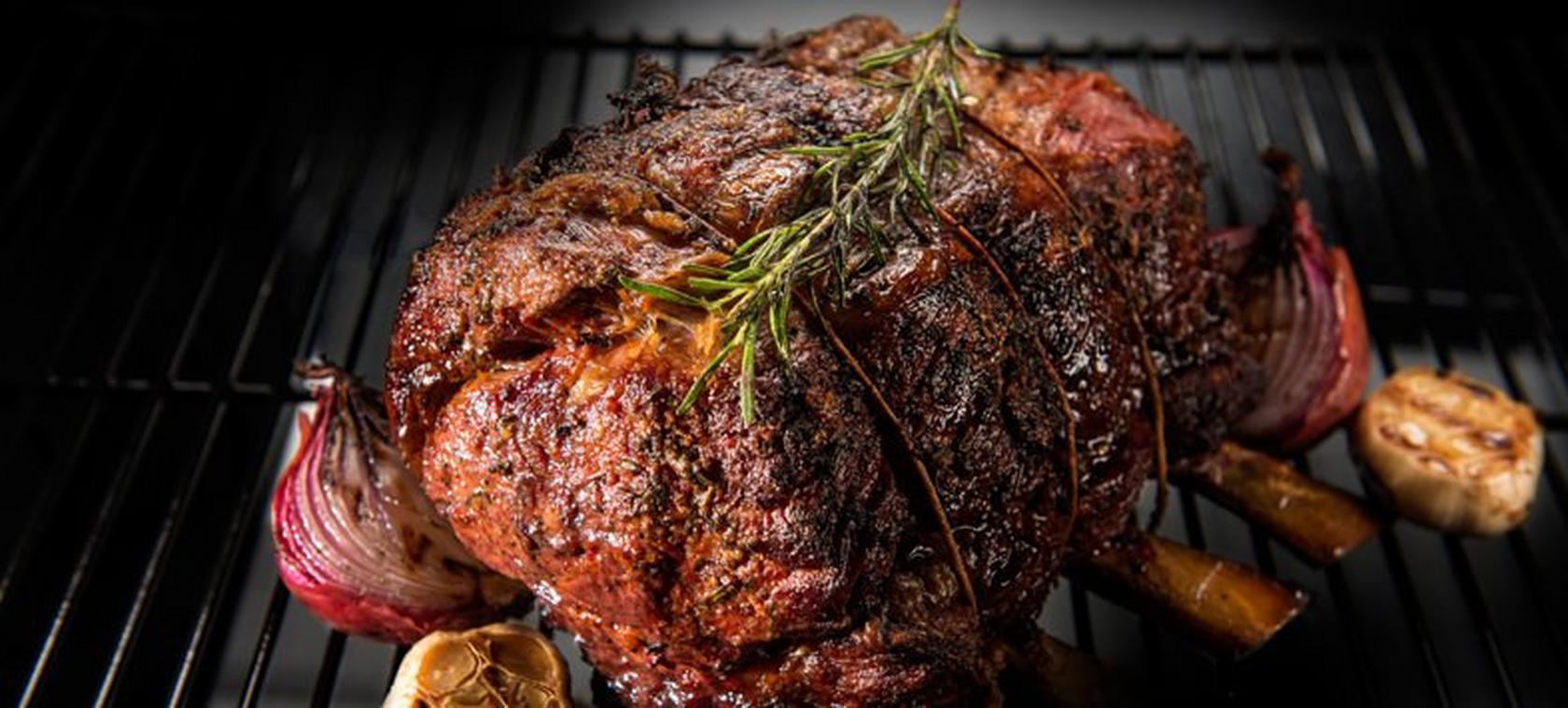
Think of cooking a chicken breast. Often the thinner edge gets cooked harder than the bulbous middle. This doesn't matter so much for chicken because we're only talking about a few extra minutes of cooking. With prime rib, which cooks for a much longer time, you could end up with a whole section of meat that reaches the target temperature 45 minutes before the center of the roast does. That whole section could end up being unpleasantly tough.
You can shape your prime rib with kitchen twine. Wrap the twine tightly around the roast so the long end is circular.
Dry Rub for Prime Rib
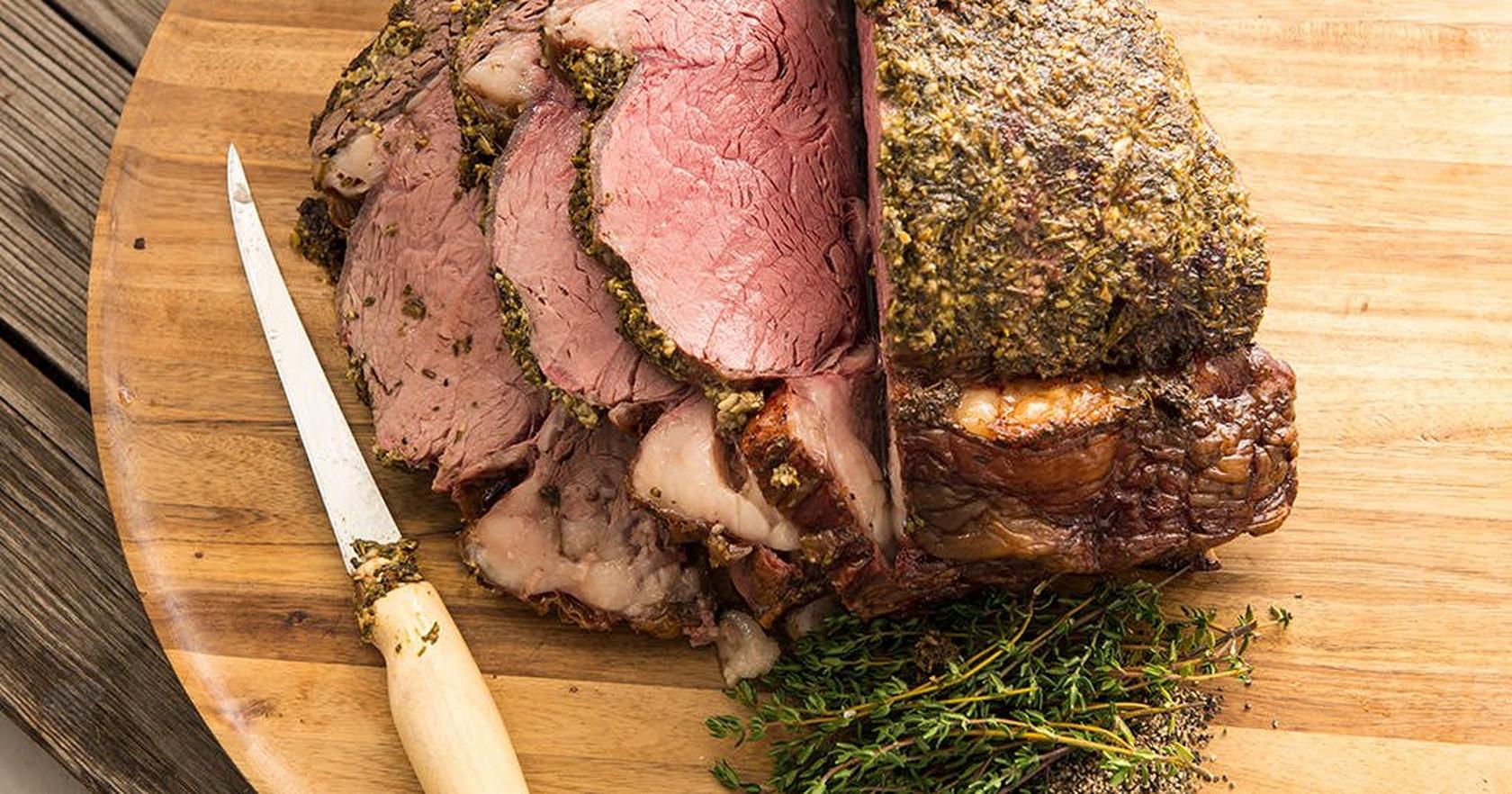
A rub consisting of herbs and spices will crisp up into a delicious and appealing bark on your finished product -- especially if you cook it in your Traeger.
Traeger's Prime Rib Rub features rosemary and garlic as the main flavors, but you can experiment with your own favorite flavors as well. A word of caution: Go light on the salt. You can always add salt but you can't take it away.
Apply the rub a few hours before cooking, then refrigerate to allow time for the rub to adhere to the surface of the meat.
What Tools You'll Need to Cook a Prime Rib
There's only one tool needed to cook prime rib -- and it's non-negotiable: a quality digital meat thermometer. If you're a casual griller of steak, pork chops, or chicken, you may be comfortable doing a simple finger press test to get a sense of how the cook is coming along. But prime rib is such a large cut of meat, there's no way that pressing on the surface can tell you the temperature at the center of the cut. And with prime rib, you really do need that exact temperature to get the tenderness and beef flavor you want.
Insert the thermometer into the thickest part of the prime rib to get an accurate reading.
Undercooked prime rib is unsafe to eat. Overcooked prime rib is tough and flavorless. So take the plunge and buy a thermometer. Word to the wise: If you "think you have a thermometer around here somewhere" make sure you do -- and that it works -- before you start cooking.
How to Cook a Prime Rib Roast on the Smoker
Cooking a prime rib in a smoker is the best way to do it. The heat will circulate evenly around the roast, giving the skin a pleasing exterior, while the fat inside slowly melts and distributes throughout the roast.
- Set smoker temperature to 250 degrees Fahrenheit and preheat with the lid closed for 15 minutes.
- Place roast on the grill and cook until the internal temperature reaches 10 degrees below your desired doneness level (we recommend 130 degrees Fahrenheit, for medium-rare) between 3-5 hours. Remove the roast from the smoker to rest.
- While roast rests, increase temperature to 450 degrees Fahrenheit and preheat with the lid closed.
- Place the roast back on for 15 minutes, flipping halfway through or until the internal temperature registers at your desired doneness level.
- Remove smoked prime rib roast from the grill and allow it to rest at least 15 minutes before slicing.
What Is the Easiest Way to Cook Prime Rib?
The easiest way to cook prime rib is to skip all of the preparation steps and the last-minute crisp. Simply season the roast with salt and pepper, cook it at 250 degrees Fahrenheit, and remove it when the internal temperature reaches 130 degrees Fahrenheit (medium-rare).
Do You Cook Prime Rib Covered or Uncovered?
Always cook prime rib uncovered. We're assuming here that you are cooking at the recommended temperature of 250 degrees Fahrenheit. If you cook a prime rib at higher temperatures for long periods of time, the heat from the oven or smoker could cause the exterior of the roast to burn (you'll likely dry out the roast by cooking it that hot). Follow proper cooking technique and you won't need to cover the roast.
How Long Do You Smoke Prime Rib per Pound?
A good general guideline for smoking prime rib is 15 minutes per pound.
However, we'd advise against trying to figure out a precise prime rib cooking time. You're just setting yourself up for disappointment. There simply is no way to tell with such a large cut of meat -- every time you cook, it will be different. The exact timing will depend on the specific cut of meat, the outdoor temperature and humidity, and even which way the wind is blowing.
Expert pitmasters recommend that you cook to temperature and forget about time.
What Temperature Should a Prime Rib Be Cooked To?
The best temperature for prime rib is 130 degrees Fahrenheit for medium-rare.
How to Carve Prime Rib
Carving a gorgeous prime rib requires a little bit of science and a little bit of art. Some things to consider:
- Try to carve the meat against the grain. This will break up some of the muscle fibers and make the meat more tender in the mouth.
- We recommend slices that are 1/2-inch thick -- but you can always slice to your own preferences and those of your guests
- If your roast is bone-in, stand the rib upright, and follow the curvature of the bones as closely as you can until you cut through the base. Then slice the remaining pieces to your desired thickness.
How to Make an Au Jus for Prime Rib
Here's a simple recipe for au jus, a traditional sauce served alongside prime rib and other beef dishes.
Place the following in a pot:
- 1 quart of beef stock
- 1 sprig thyme
- 1 sprig rosemary
- 4 whole peppercorns
- 2 whole cloves garlic
Bring to a simmer and cook for 30 to 45 minutes. Salt to taste, strain out the solid ingredients, and serve with a spoon for ease of saucing.
What to Serve with Prime Rib
What goes well with prime rib? We'd suggest complementing the hearty, beefy flavor of prime rib with a creamy vegetable dish. Here are three tasty sides we'd recommend serving with prime rib.
How to Reheat Prime Rib
This method is the best way to reheat prime rib.
- Preheat your grill or oven to between 250 and 350 degrees Fahrenheit. Slower is better, but if you're really hungry you may be willing to sacrifice flavor for speed.
- Place the slices in an oven-safe container like a roasting pan, baking dish, or packet of aluminum foil.
- Pour a small amount of au jus, beef stock -- basically the most beef-flavored liquid you have -- over the slices. Water is okay too.
- Cover the dish and place it in the preheated oven for 10 to 30 minutes depending on how many slices you added and how hot your grill or oven is. The liquid will start to steam, slowly reheating the prime rib.
If you’re feeling lazy, zap it in the microwave on high for 30-second intervals until it's hot.
Note: Food safety experts recommend that any refrigerated leftover meat should reach 165 degrees Fahrenheit before serving.
Prime Rib Turns Any Day Into a Holiday
Prime rib is traditionally enjoyed during the holidays, but don't let the calendar tell you how to live your life. This incredible yet shockingly simple meal requires a few days of preparation and an afternoon of patience (with a few cold ones as company). Make your own holiday with an amazing prime rib dinner.